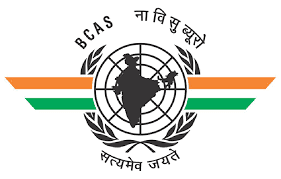In an earlier blog (https://b-b-dash.blogspot.com/2022/09/lies-damned-lies.html), I held forth on how cops are relying on statistics just like a drunken man relies on a lamp post, for support rather than illumination. In one of the responses, someone asked me what should be done then. Since the answer would’ve been a little involved, long-winded and possibly extremely boring, I desisted. Recently, during the event for launching of my book (Police in Blunderland) in Kolkata, the question cropped up again when the moderator asked me what the policy makers should do. I answered briefly that they should do away with the existing statistics and, instead, stick to two measures. Here’s the full answer which I couldn’t give in a Q & A session.
The problem has been that the Police and the public have not been working together. It’s desirable that they should and we should measure whether they are working together. Let’s surmise how.
Suppose we don’t bother about how many murders are committed this year vis-à-vis last year. Murders need to go up because the population is going up, propensity and rewards of crime are going up, while police/ population ratio is either static or going down. Any statistic to the contrary is a chimera. So, let’s see if we’re getting together with the public to improve the crime situation. Let’s change the statistical game and measure one statistic, no. of citizen-assisted arrests as a proportion of total arrests at each Police Station/ District/ State/ Country. That will help us figure out whether the public is with us or against us and whether we are working with the public or not.
How does that help? Let’s take a terrorist event. The event is a culmination of at least seven preceding processes that the terrorist himself undertakes, (i) recce, (ii) elicitation, (iii) testing security, (iv) acquiring supplies, (v) suspicious persons who do not belong, (vi) dry runs and (vii) developing assets. If citizens have a good working relationship with the police, each of these signs will be noticed and reported. On the other hand, if an adversarial role exists between the police and the citizenry, it will always be “not my problem, who wants the hassle?” For police to gather the information, it entails enormous costs in terms of manpower deployment, surveillance, interception through very expensive equipment and so on whereas the information is available to the citizenry practically free of cost. For policing to be effective and cost efficient, it needs to be “co-produced” because citizens have more information at lesser cost than the police.
Will it make a difference to the crime situation? It will, if we measure the crime situation correctly. The crime situation is not the number of murders or dacoity or theft or so on. It is something called the “cost of crime.” Now, what strange animal is this?
The cost of crime is the sum total of Victim Costs + Avoidance Costs + Community Costs + Residual Fear + Criminal Justice Costs + Offender Costs.
The victim costs include tangible losses like property loss, value of lives lost, medical costs, burial/ cremation costs, mental health care costs, wage and productivity loss, legal costs, household service loss, school days loss and intangible losses like pain and suffering. Avoidance costs are the costs of the precautions potential victims take to avoid the crime, e.g., burglar alarm system, CCTV cameras, shifting residence to less crime-prone or gated community, etc.. Community costs include costs of hotlines, public announcements, neighbourhood watch schemes, etc.. Residual fear pertains both to victims and potential victims and persists long after a crime is committed. Criminal justice costs include police and investigative costs, costs pertaining to prosecution (courts, lawyers, witnesses’ time, victim’s time in court) and costs of prison facility, etc.. For the period the offender is incarcerated, he is not economically productive so there is an offender cost in terms of lost productivity and so on.
All this sounds quite a handful but, actually, these costs are already being calculated in some countries, and quite effectively too. India, with its serious intellectual and IT capability will be quickly up to the task if only there is the will. Once a software is in place, it can easily feed off the details from the FIR and other documents already available digitally. If this total cost of crime per capita or per policeman comes down, that would be a definitive achievement.
In these columns, I
have been pressing for online registration of FIRs for all crimes, including for
false complaints. Certain categories of cases are now possible to be registered online in certain jurisdictions but things haven’t progressed much. We fear false
cases too much. Robust prosecution for false cases will bring that problem
down. This is an issue I propose to elaborate upon later.












